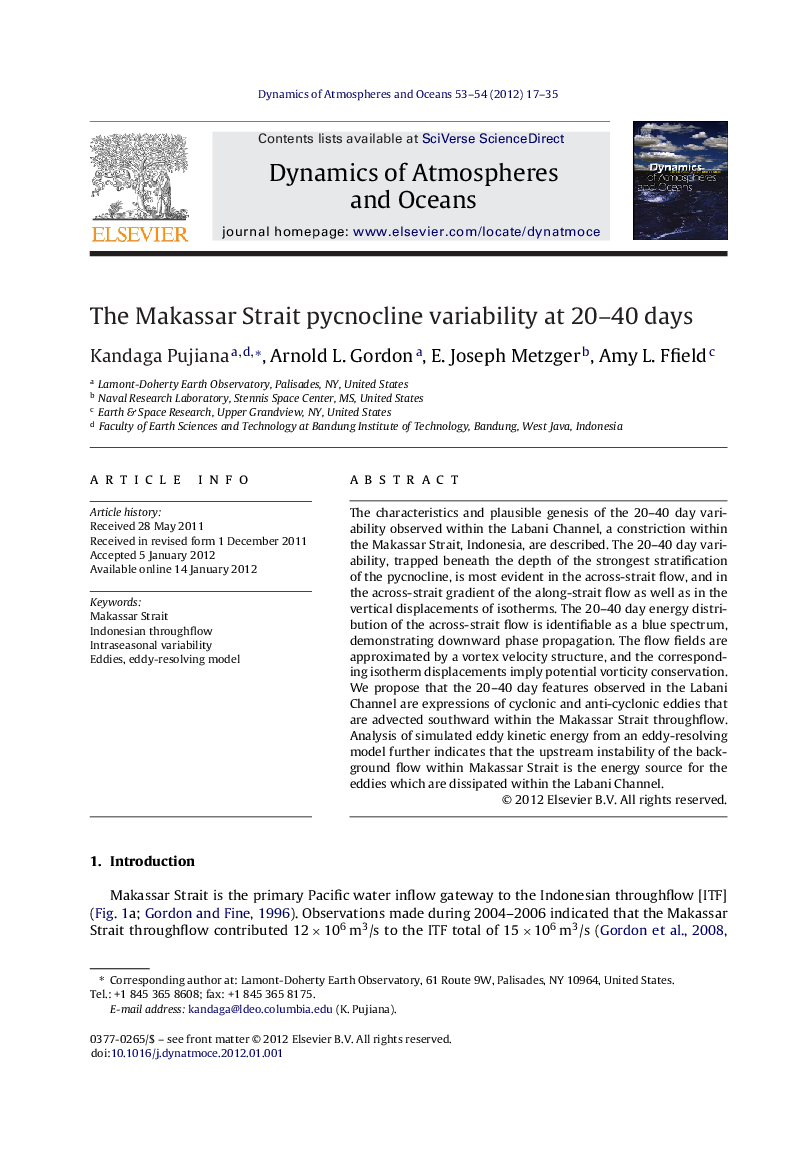| کد مقاله | کد نشریه | سال انتشار | مقاله انگلیسی | نسخه تمام متن |
|---|---|---|---|---|
| 4674077 | 1634234 | 2012 | 19 صفحه PDF | دانلود رایگان |

The characteristics and plausible genesis of the 20–40 day variability observed within the Labani Channel, a constriction within the Makassar Strait, Indonesia, are described. The 20–40 day variability, trapped beneath the depth of the strongest stratification of the pycnocline, is most evident in the across-strait flow, and in the across-strait gradient of the along-strait flow as well as in the vertical displacements of isotherms. The 20–40 day energy distribution of the across-strait flow is identifiable as a blue spectrum, demonstrating downward phase propagation. The flow fields are approximated by a vortex velocity structure, and the corresponding isotherm displacements imply potential vorticity conservation. We propose that the 20–40 day features observed in the Labani Channel are expressions of cyclonic and anti-cyclonic eddies that are advected southward within the Makassar Strait throughflow. Analysis of simulated eddy kinetic energy from an eddy-resolving model further indicates that the upstream instability of the background flow within Makassar Strait is the energy source for the eddies which are dissipated within the Labani Channel.
► We examine the characteristics and plausible genesis of the 20–40 day variability in Makassar Strait.
► The 20–40 day variability is evident in the across-strait flow, relative vorticity and in the vertical displacements of isotherms.
► The 20–40 day variability is trapped beneath the depth of the strongest stratification.
► We propose that the 20–40 day features are expressions of advected cyclonic and anti-cyclonic eddies.
► An eddy-resolving model indicates that the upstream instability of the background flow within Makassar Strait is the energy source for the eddies.
Journal: Dynamics of Atmospheres and Oceans - Volumes 53–54, January 2012, Pages 17–35